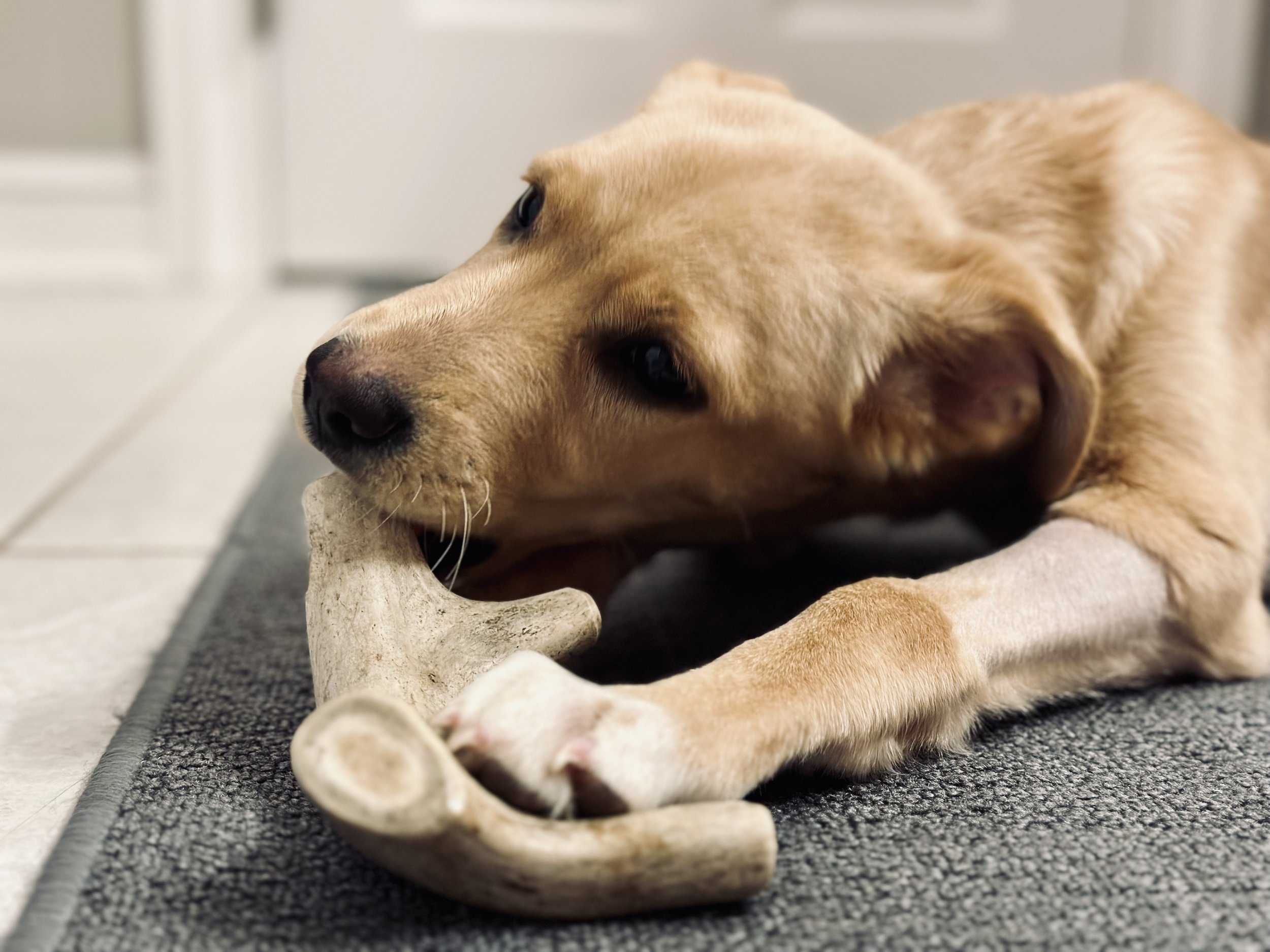Are Antlers Safe For Dogs?
Antlers have become a popular natural chew option for dogs, providing a long-lasting and nutrient-rich alternative to synthetic bones and rawhide. However, many pet owners ask: Are antlers safe for dogs? The answer depends on several factors, including the type of antler, your dog’s chewing habits, and how the antler is introduced. In this guide, we’ll explore the safety, benefits, and best practices for giving your dog antlers as a chew.
The Benefits of Antler Dog Chews
Long-Lasting & Durable – Unlike traditional chew toys, antlers are extremely tough and can withstand heavy chewing for weeks or even months.
Natural & Nutrient-Rich – Antlers are naturally shed by deer, elk, and moose, and they contain essential minerals like calcium, phosphorus, and zinc.
Odor-Free & Mess-Free – Unlike rawhide or other natural chews, antlers don’t have a strong odor or leave behind a sticky residue.
Good for Dental Health – Chewing on antlers can help scrape away plaque and tartar, promoting better dental hygiene.
Sustainable & Eco-Friendly – Since antlers are naturally shed each year, they are a renewable and ethical choice.
Potential Risks of Antlers for Dogs
While antlers have numerous benefits, there are some risks to be aware of:
Tooth Fractures – Some dogs are aggressive chewers, and biting down too hard on an antler may result in cracked or broken teeth.
Choking Hazard – If an antler becomes small enough to be swallowed, it could pose a choking risk or cause an intestinal blockage.
Splintering Concerns – Lower-quality or overly dry antlers may splinter, potentially injuring a dog’s mouth or digestive tract.
Choosing the Right Antler for Your Dog
To minimize risks, selecting the right antler type and size for your dog is crucial:
Whole vs. Split Antlers – Whole antlers are more durable and better suited for strong chewers, while split antlers expose the softer marrow, making them ideal for light to moderate chewers.
Size Matters – Choose an antler that is appropriately sized for your dog. It should be larger than your dog’s mouth to prevent accidental swallowing.
Moose, Deer, or Elk?
Deer Antlers – The hardest and most durable option, best for powerful chewers.
Elk Antlers – Slightly softer than deer antlers and have a larger marrow center, making them great for most dogs.
Moose Antlers – The softest option, best for senior dogs or those with sensitive teeth.
Best Practices for Giving Your Dog an Antler
Supervise Chewing – Always monitor your dog when giving them an antler to ensure they are chewing safely.
Check for Wear & Tear – Inspect the antler regularly and remove it if it becomes too small or develops sharp edges.
Introduce Slowly – If it’s your dog’s first time with an antler, allow short chewing sessions to ensure they tolerate it well.
Provide Fresh Water – Ensure your dog has access to plenty of water while chewing, as antlers can make them thirsty.
Final Verdict: Are Antlers Safe for Dogs?
Antlers can be a safe and beneficial chew option for many dogs when chosen appropriately and used under supervision. However, they may not be suitable for aggressive chewers or dogs with a history of dental issues. By selecting the right type, monitoring usage, and following best practices, you can safely incorporate antlers into your dog’s chew routine. Always check with your local veterinarian with any questions or concerns.
Where to Buy High-Quality Antlers for Dogs
If you’re looking for naturally shed, high-quality deer, elk, or moose antlers, browse our selection today! We offer a variety of sizes and types to match your dog’s chewing needs.
Have you tried giving your dog an antler chew? Share your experiences in the comments below!

